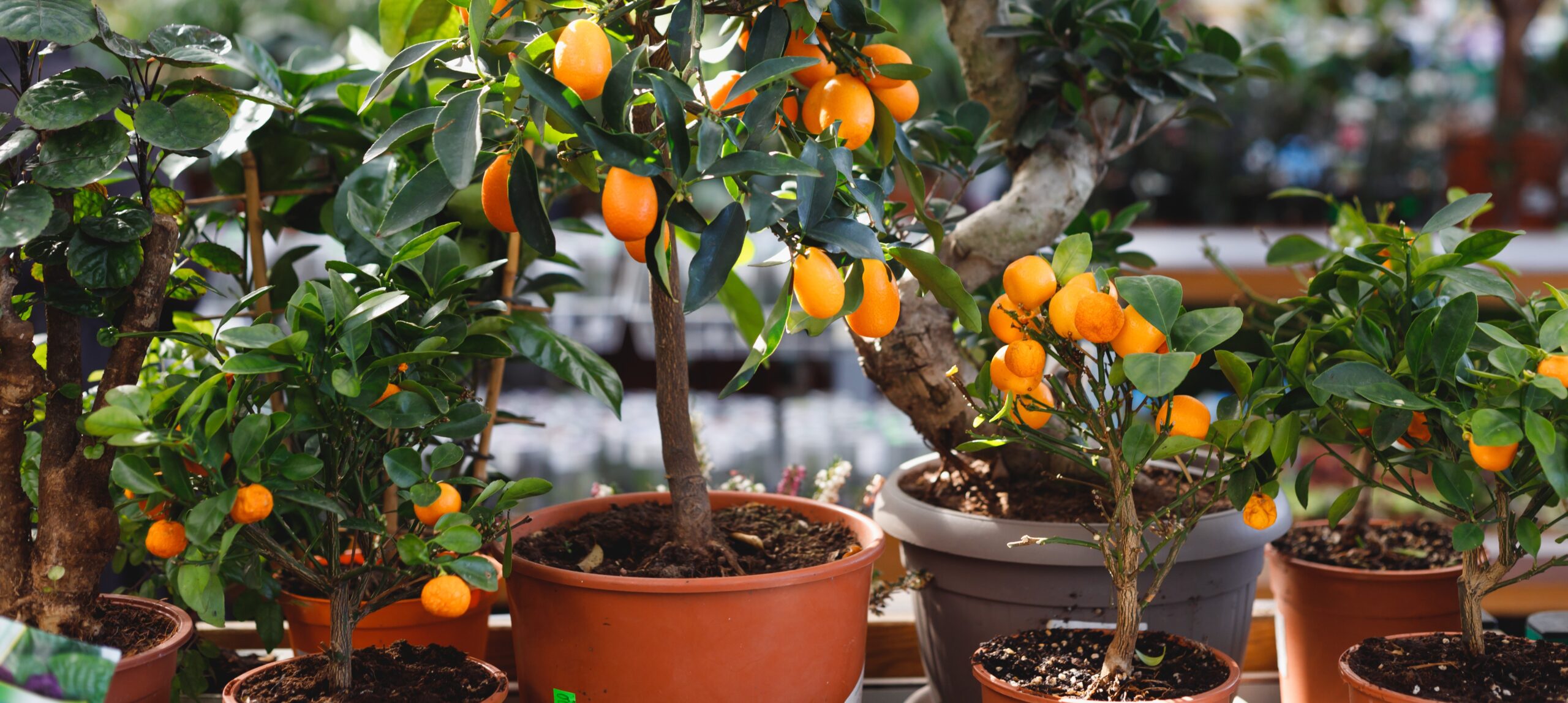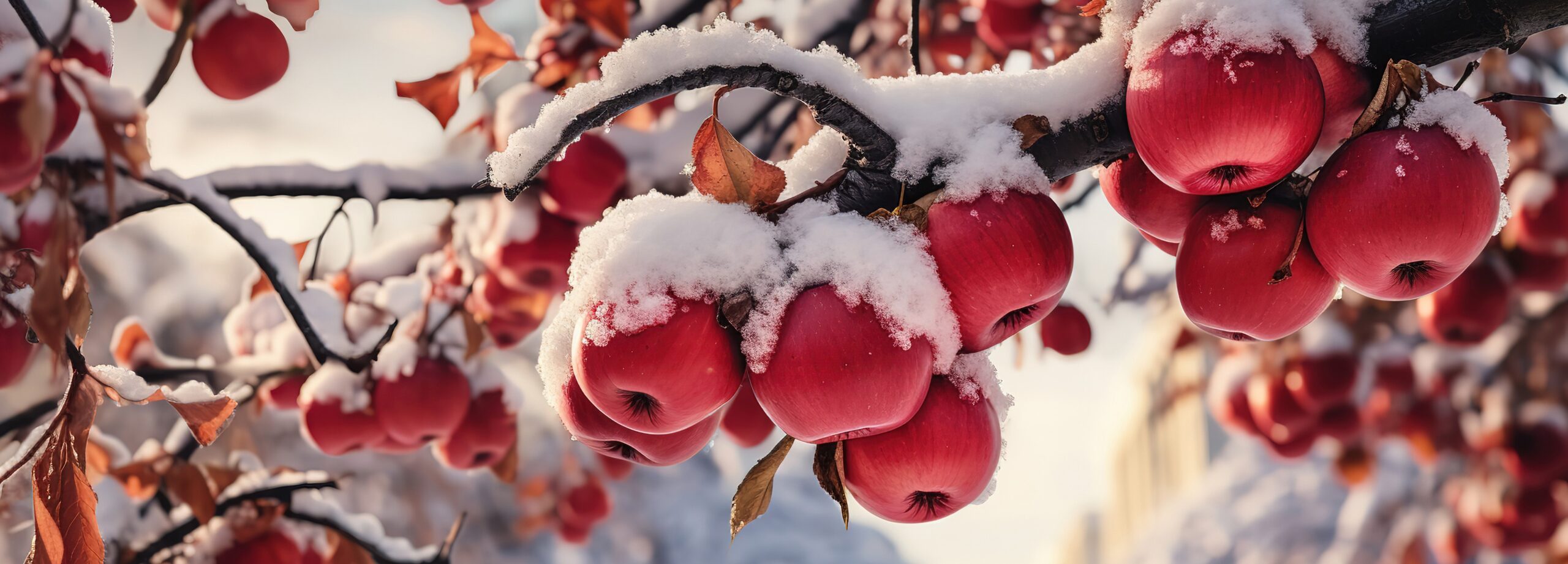
Container Growing Guide
Tips on potting up, overwintering, watering, and pollination!
There are many advantages to planting fruit trees in containers. You might be renting and want to take your tree with you, or you don’t have the right space and soil conditions, or maybe you want to try planting something outside of your cold hardiness zone. Planting in containers allows you to help insulate you plants through the winter, as well as easily move them to suit your space. There are some considerations to make when choosing to plant in containers and we’re going to walk you through the basics to help you get started!

Which Trees to Plant in Pots
When choosing which trees to plant in pots, you should be looking for dwarfing or semi-dwarfing varieties. Below are some great fruit tree options, and we recommend searching through our catalog of these trees to find the one that best suits your climate and taste! Be sure to look at pollination requirements for your fruit trees to see if you will need two varieties to produce fruit. Information regarding USDA Zones, pollination requirements, rootstock, and yield will be listed near the bottom of each individual plant’s page.
Choosing the Right Soil and Pot
Soil and Fertilization
Potted plants will need well-draining soil that is not susceptible to compacting, which will make thorough watering more difficult. It is important to research each varieties general soil needs to make sure you are meeting those as well. Fine propagation mix is great for starting seeds, but for trees and shrubs and vines, a coarser mix containing bark and pumice will help prevent root rot. Another consideration is soil acidity. While most plants are happy in regular potting soil, Tea and Blueberries like a more acid soil. Look for potting soil made for Blueberries and other acid loving plants like Rhododendron and Camellia. There are many citrus mixes that are a great option for other fruit trees as well due to being very well draining.
Fertilizing should be used during the growing season and applied according to the directions given by individual fertilizers. If you are living in a cold area and will need to help your plant through the winter, it is recommended to not fertilize during the fall. This way the plant does not begin lots of new growth that will be susceptible to cold damage as the winter settles in.
Different Containers and Potting-Up
When people are planning on growing potted trees, they often jump to looking for a large pot that would support a fully grown tree, but when you’re starting with a small one-gallon tree, you want to increase pot size incrementally. Too large of a pot will hold on to too much moisture and can lead to root rot. Once the tree has grown to the limits of a pot, you should pot it up 1/2″-2″ in diameter, depending on how fast the plant is growing. Selecting your container largely comes down to budget and aesthetic choice. The one thing that all pots should have is drainage holes to allow for airflow and prevent rotting. When your tree is young and growing quickly, it may be easier to stick with simpler cheaper pots until your tree is more established and doesn’t need to be potted up as frequently.
Overwintering Your Potted Plants
During the winter months potted plants will require a little extra care. It may be a bit counter intuitive, but container plants are actually more susceptible to winter frosts than those in the ground. Even if your plant is hardy to your USDA Zone, it will still need help throughout the winter when planted in a container. When plants are in a pot, their roots are exposed to the elements, as opposed to being protected by the earth when in the ground, and the roots are not as cold hardy as the above ground growth. Here are some essential tips and tricks to keeping your plants warm this winter!
See more information on protecting tender plants in the winter HERE.

Insulating Your Containers: Indoor vs Outdoor Winterizing
Some potted plants will need to be stored indoors over the winter, while others can be insulated outdoors. Citrus in pots generally need to be brought indoors when being grown in climates colder than Zone 10. It’s important to research your own plant varieties to ensure you’re providing them with the conditions they needs to survive and thrive!
Indoor
When moving potted plants to an indoors location, evergreens will need to be kept somewhere with bright light while deciduous plants should be kept in an unheated garage, where they will remain in the temperature range of 32°F-45°F. Many deciduous plants still need a certain amount of hours in these temperatures in order to bloom, this is called a plant’s chill hours. Different varieties have different requirements for chill hours in order to bear fruit and to break dormancy.
Outdoor
If you are overwintering your container plant outdoors, there are a few different options you have for keeping those roots warm. Different types of pots have varying abilities to withstand freezes. Some unglazed terra-cotta pots are more susceptible to cracking, while glazed pots tend to crack less. Sturdy plastic or fiberglass can withstand more freezing and are less susceptible to cracking.
Insulating your outdoor pot is how you can help it get through the winter unharmed. Some people have the space to dig a hole and place the pot inside the hole to allow the earth to keep the plants warmer, but many people growing in containers do not have room for this. Instead, you can wrap your pot in bubble wrap or burlap and plastic. The plastic around the burlap will help prevent it from absorbing too much moisture and freezing the pot. You can also provide more insulation by mulching the topsoil in your container. Mulching can be done with straw, dried leaves, or wood mulch.
Watering
When you grow a plant in a pot, you are responsible for providing it with its preferred environment. It is important to check soil moisture often. While your plant does not want to dry out, the biggest danger is overwatering. During the growing season, a deep watering once a week is often enough but can increase during heat waves.
In the winter, when the plant is growing slowly, if at all, a deep watering every two weeks or even less frequently should be enough. Check the top 2-3 inches of soil to determine water needs. When dry, it is time to water. You can also check water by tipping the plant slightly to test the weight. You will notice the difference in weight between a fully watered plant and a dry one. Be careful when watering dry plants, as water may run off the side of the soil mass, giving the appearance of adequate water but actually leaving the root ball quite dry. This can indicate that the soil is hydrophobic.
Pollination Requirements During Winter
Some plants bloom during the winter time, and this can make it difficult for them to be pollinated due to a lack of pollinators during the cold months. You might be overwintering your plant indoors or outdoors depending on your plant’s needs. Most citrus are overwintered indoors in cooler climates, and typically bloom in the winter. Regardless of if your plant is indoors or outdoors, due to the lack of pollinators available in the winter, you may want to play bee and help move pollen from flower to flower. You can do this with a small brush and the appropriate buzzing sounds.
